1/12 A man who needs no intro joins us today - @punk6529 🧠 He dropped insights on personal drivers, the networked nature of art, ETH vs USD pricing, L1 vs L2 - and predictions about where NFTs fall on the crypto adoption timeline. Bookmark it🔖 and enjoy! 🧵👇
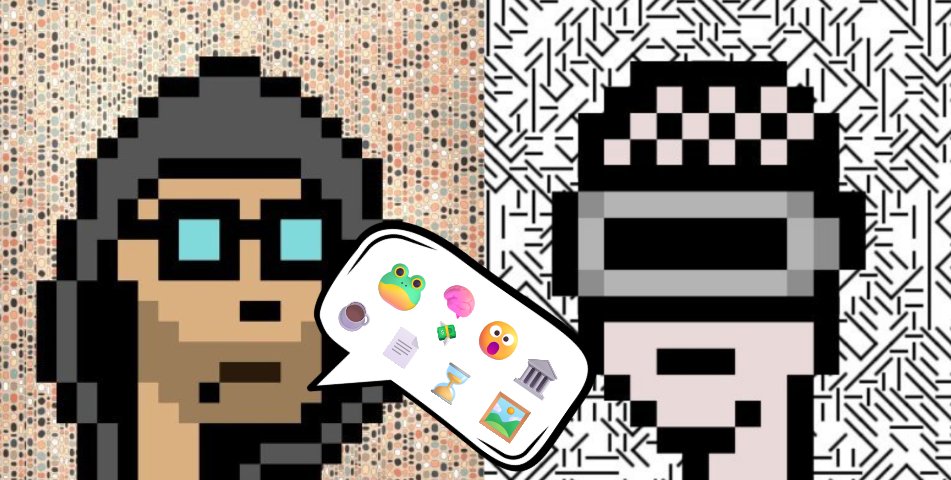
2/ J: You've published over 150 threads on NFTs, tokenized art, collecting and various philosophical topics. What gives you the drive to keep going after all these years? Looking at the work you've done it's kind of incredible - but I’m guessing it doesn’t really feel like “work” to you?
6529: You get only one life and you should aim to do things that matter, if you have the capabilities to do so.
It is very important to put a decentralized, self-custodied layer of societal infrastructure in place this decade if we want to prevent AI-driven digital totalitarianism. Everything I am doing has this underlying goal.
I am working on two dimensions: a) a specific plan that I am working on operationally (The Memes, 6529 Museum, etc) and b) threads to help or enable others to do things that I cannot do myself
There are two threads that I would like to highlight:
1) “Freedom to Transact” is almost certainly the most important thing I will ever write. In 3 years, it has become shorthand and was referenced by two of the 2024 Presidential candidates in their campaign speeches (DJT and RFK).
The concept, of course, was understood intuitively by many before me, but the particular presentation and encapsulation has made it memetic in a way that now cannot be put back in the box.
2) “Life is Short” is not a crypto thread but I cannot tell you how many people have told me that it has changed how they view and live their life. This makes me happy on a dimension that cannot be captured well by the concept of “work”
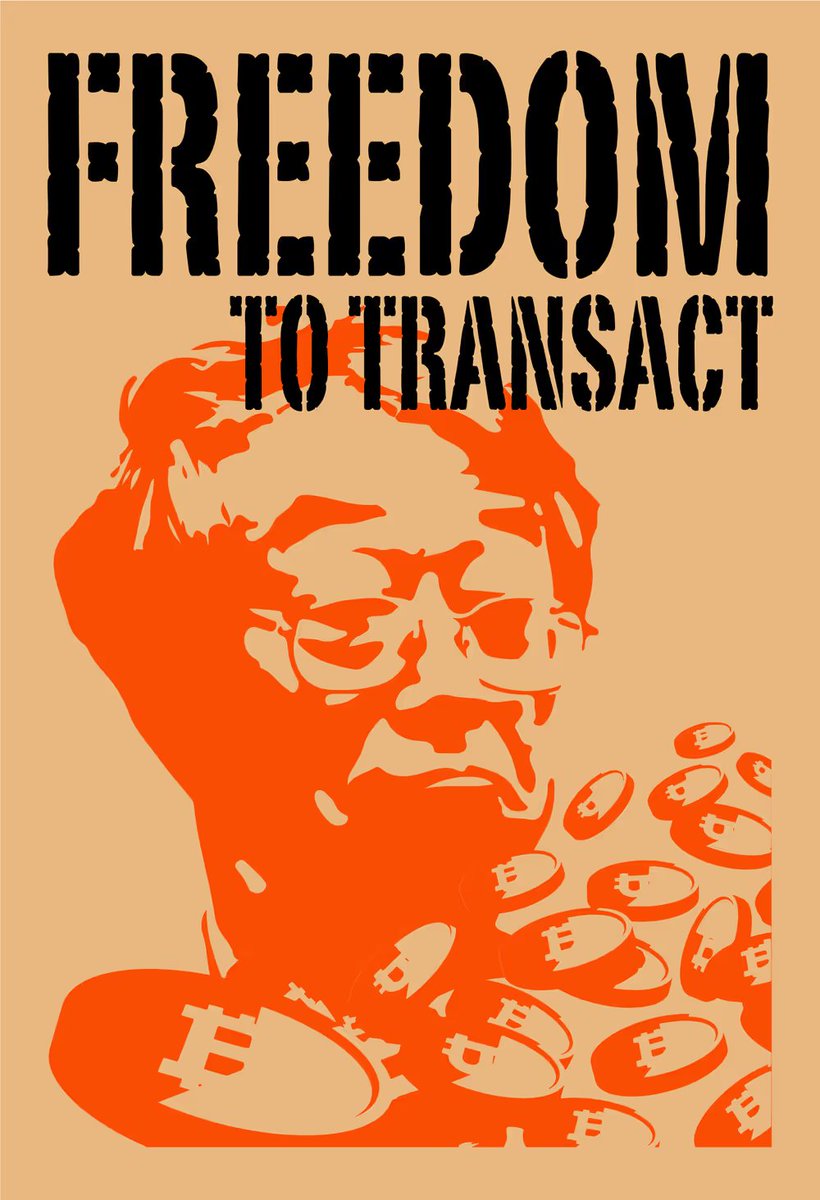
3/ J: In your last thread you mentioned "I am pretty sure I am right and I am feeling something that others will feel in the future". Has this kind of intuition always been something you've paid attention to? Could you elaborate on the role intuition plays in your life?
6529: It is not exactly “intuition” I think. It is more like that I am:
a/ able to think abstractly
b/ open to new ideas, constantly learning and changing my mind about things
c/ willing to try things
The end result of the above is “hey, I like this, this is cool, this is going to work” and based on historical precedent I tend to have that feeling 2 to 25 years before others, depending on the topic!
So I have confidence in my “intuition” but my intuition comes from “taking action” and I think people should be more open to trying things.
Perhaps a helpful framework for people could be that they commit to spending 5% of their time and free money on things without worrying in advance if they will be a success. I think over long periods of time, this type of future orientation will be net positive for them.
5/ J: A week ago we witnessed probably the best tokenized art exhibition ever hosted by the @ToledoMuseum - They’ve also started building their own collection which includes a Punk and a Ghost Squiggle among others. What is the easiest path for other museums to follow and learn more about tokenized art?
6529: I think museums of contemporary/modern art need to be more open to new ideas and willing to try things, while also noting that what I think is completely pointless because they are going to move at their own pace.
They are, in principle, art museums and, as such, open to new and creative ideas, but I think their adoption cycle is more like financial institutions adopting BTC and ETH (slow and cautious).
I think relative to the average collector in the space, I am much more relaxed about this topic.
NFTs are inevitable for the same reasons that BTC was inevitable. So all museums of contemporary art will own NFTs eventually for the same reason that all financial institutions will own BTC and ETH eventually. So I do not lose much sleep about when and how museums will collect and curate NFTs.
When they decide it is important enough to them, they have all the relevant skills to figure it out; until then, those who go earlier can gain a form “competitive advantage” in the art of the network, the native art of the digital networks that will run our lives.
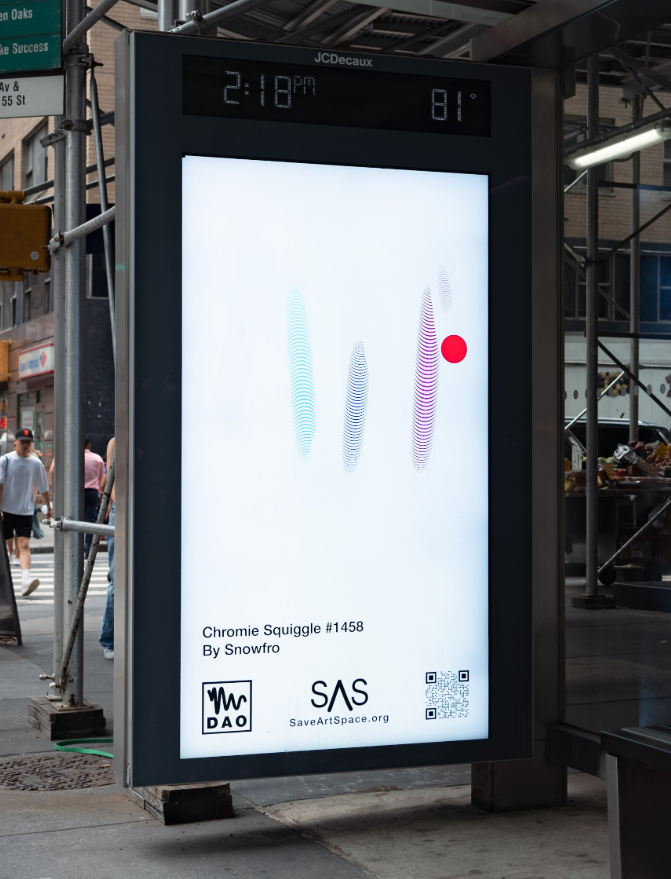
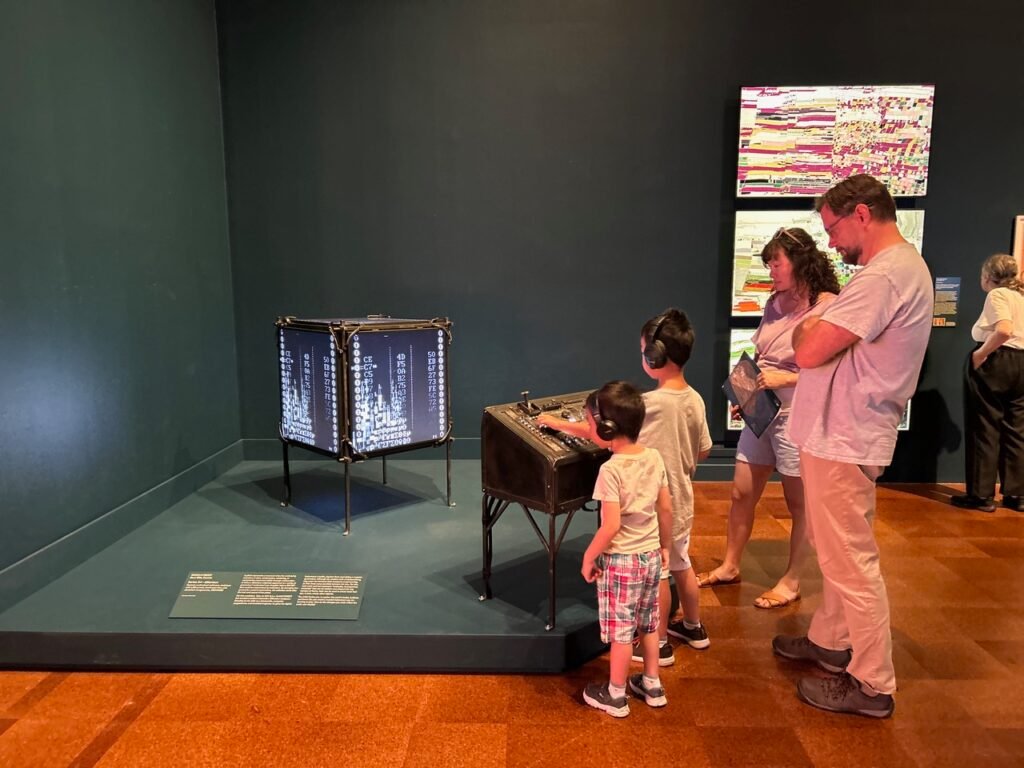
6/ J: It seems that the discovery aspect of our space is a bit difficult for newcomers (as recently pointed out by @RaoulGMI ). With thousands of artists and millions of works - everything feels scattered and hard to find. How would you tackle this issue to make discovery more convenient?
6529: Discovery in our space is trash, is the number #1 barrier to proper adoption and is an incentive management problem that is not easily solved.
In fungible coins, most of the trading volume is in the best coins so when you go to Coinbase and Binance, BTC and ETH trading, pricing and workflows are prominently displayed.
In NFTs a lot of the top collections rarely trade, so the marketplaces are chasing and prominently the “random collection surging that day” which logically leads a new participant in the space to think “wtf is this space”
I do not have an obvious solution yet, when I do, I will let everyone know!
7/ J: Most recently I published an analysis of Sam Spratt and the network effects surrounding his art. It feels like this is only possible in our space - and it could be a true game-changer for the entire art world once the impact is fully understood. What are your thoughts on the networked aspect of art in our space?
6529: NFTs are art of the network. It is the most important thing about them, even though almost nobody sees it yet.
Every single NFT from every collection is networked by virtue of being a token on ETH (or some other blockchain). This is mostly misunderstood but it is a radical change from the past, in the way that BTC has different network properties than gold.
Beyond that, there are collections that are themselves using some form of network logic. Rare Pepes and, more recently, @SamSpratt @jackbutcher @XCOPYART and The Memes all have an explicit or implicit understanding of networks embedded in their logic.
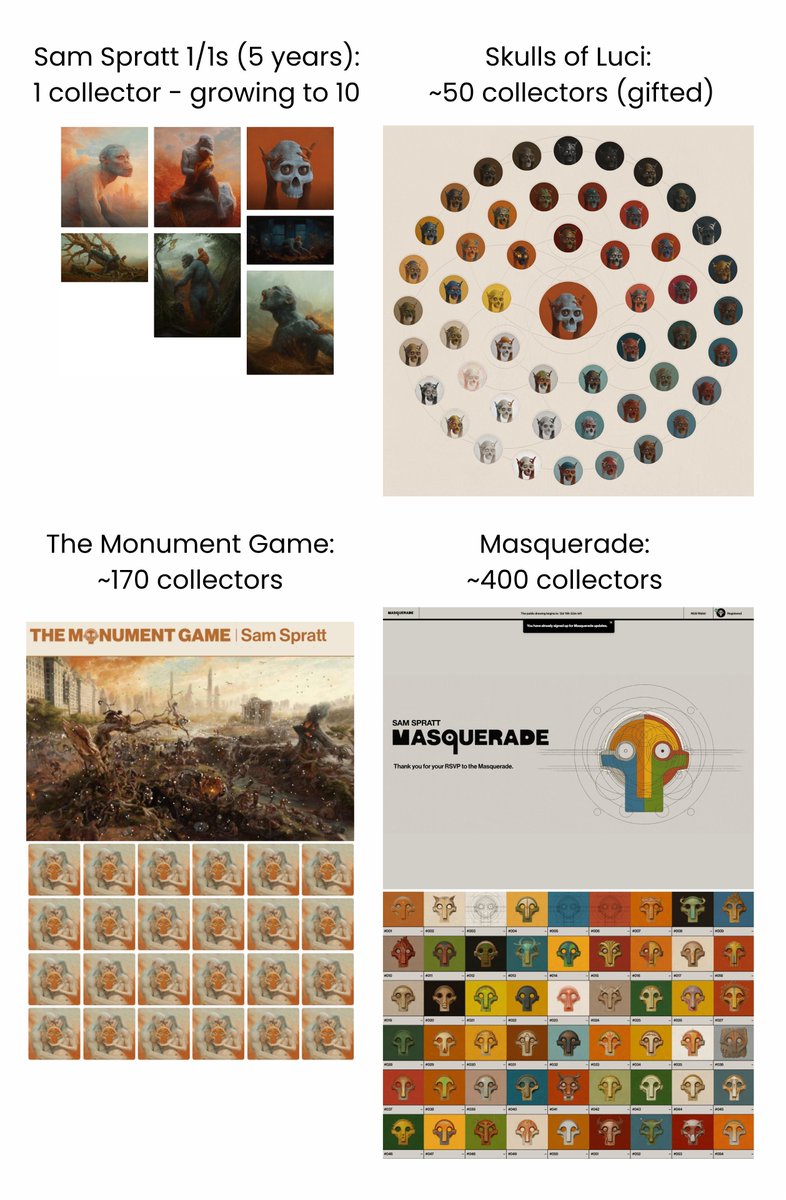
8/ J: When the crypto market is down - people want art priced in USD. When the market is up - ETH pricing suddenly becomes perfectly fine again. What’s your take on this evergreen topic?
6529: My take is that people have no idea what they are talking about.
The best unit of account for ETH-based NFTs is ETH. It is the first time in history that anything has been denominated in cryptocurrency and this is something very precious and to be celebrated. I think about the type of (relatively expensive) NFTs that I collect 80% in ETH terms and 20% in USD terms.
The price in USD “debate” is baffling to me. At best, it is a neutral topic because obviously anyone can convert ETH prices to USD and back at any time.
I do not think it is neutral however because I think the best and most successful collections have and will continue to lean into their native medium and their native unit of account.
It does not mean that “denominating in ETH” is some type of magic tool that will make your collection successful (most collections will not be successful for the normal reasons) but “leaning into and denominating in USD” is even less likely to help a collection be successful.
Now, if the question is “should you be willing to drop your price in ETH”, well of course. Crypto prices go up and down all the time and NFTs are not immune from the laws of supply and demand.
10/ J: I feel that you’ve done something truly monumental with The Memes by 6529. I believe its significance will only be fully understood in the years to come. How long do you plan to keep it going and what are your future plans?
6529: Thank you. There are two lenses for The Memes.
The “traditional” lens is that it is an incredibly important collection for the 2022-to-present-and-ongoing period. We are closing in on almost 400 NFTs from an incredibly diverse set of active NFT artists, across all styles and modalities, often highly topical, with wide range of entry price points for any type of collector. I am not sure there is a better “survey collection” for our current time.
The Memes however are “hiding” in plain sight one of the most interesting experiments in decentralization in the whole crypto space. As you know, for the last 1.5 SZNs, @6529er and I are no longer curating The Memes and they are being curated solely by the collectors.
This is not a happy coincidence. Every single part of the The Memes from the first day they started has been designed to build towards one of the important decentralized networks of the world focusing on areas that the financialized part of crypto is completely ignoring (roughly: art, science and technology).
To your specific question, an excellent metric for success would be “how long do I plan to keep going” to be completely irrelevant to the success of the 6529 network. Or, to put it differently, I have set my goal as making something sufficiently permissionless and censor-resistant that sometime this decade, I can look someone with a straight face and say “this is the BTC of NFTs”
We are not there yet, it is an extraordinarily difficult problem, there are dozens of unsolved problems in blockchain and incentive design that we need to come up with novel solutions to, but you only get one life so you should work on important things if you can.
11/12 J: We can’t end the interview without a prediction question. Considering we’re at the beginning of crypto culture - and at the beginning of the end of fiat culture - what are your time horizons for NFTs and the tokenized art space to fully shine?
6529: When I first got involved with BTC in 2013, I told my friends and colleagues that it was going to be a 40-year societal-level project to rebuild all our value systems on crypto-based systems.Crypto is a shift like the internet was and it will take a similar amount of time for full adoption as the internet did.
My view of NFTs, and their adoption curve, has remained the same since I started. They are 8-10 years behind BTC. By this logic, 2021 was the 2013 first BTC bubble and we are currently grinding through the long hard 2014-2016 BTC wilderness.
I have consistently had 2030 as a first important checkpoint. By then, I would like us to get out of the ultra-tiny niche we are currently in, and be established and understood within the crypto space at least.
To be specific, NFTs today have an aggregate market cap of about $10B (0.3% of crypto space). As a rough proxy for activity, attention and adoption, I would like to see NFTs-as-a-sector denominated in the hundreds of billions by 2030. By 2040, I would like to see them accepted and understood outside the crypto space and, in fact, ideally just become the hidden plumbing / infrastructure for non-fungible forms of value.
Eventually, native and RWA NFTs are going to carry around more value than fungible coins (because world assets are largely non-fungible) but absolutely nobody is ready for that discussion yet, so for now we focus on the baby steps.
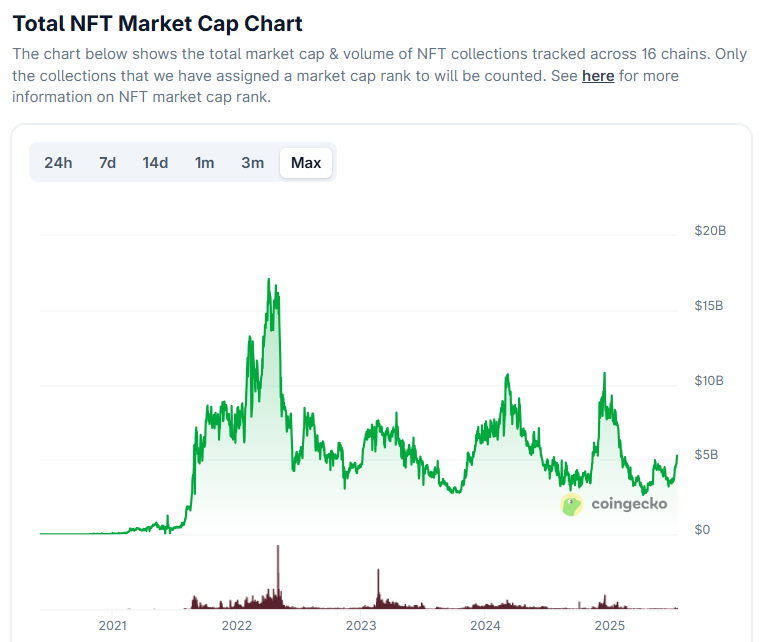
12/12 Thank you @punk6529 for finding the time to answer all the questions! I'm glad we finally made it happen with round 3 :))
____
Dear friend - if you enjoyed this interview please share it and leave a comment 🥰🫡
188.52K
631
The content on this page is provided by third parties. Unless otherwise stated, OKX is not the author of the cited article(s) and does not claim any copyright in the materials. The content is provided for informational purposes only and does not represent the views of OKX. It is not intended to be an endorsement of any kind and should not be considered investment advice or a solicitation to buy or sell digital assets. To the extent generative AI is utilized to provide summaries or other information, such AI generated content may be inaccurate or inconsistent. Please read the linked article for more details and information. OKX is not responsible for content hosted on third party sites. Digital asset holdings, including stablecoins and NFTs, involve a high degree of risk and can fluctuate greatly. You should carefully consider whether trading or holding digital assets is suitable for you in light of your financial condition.

